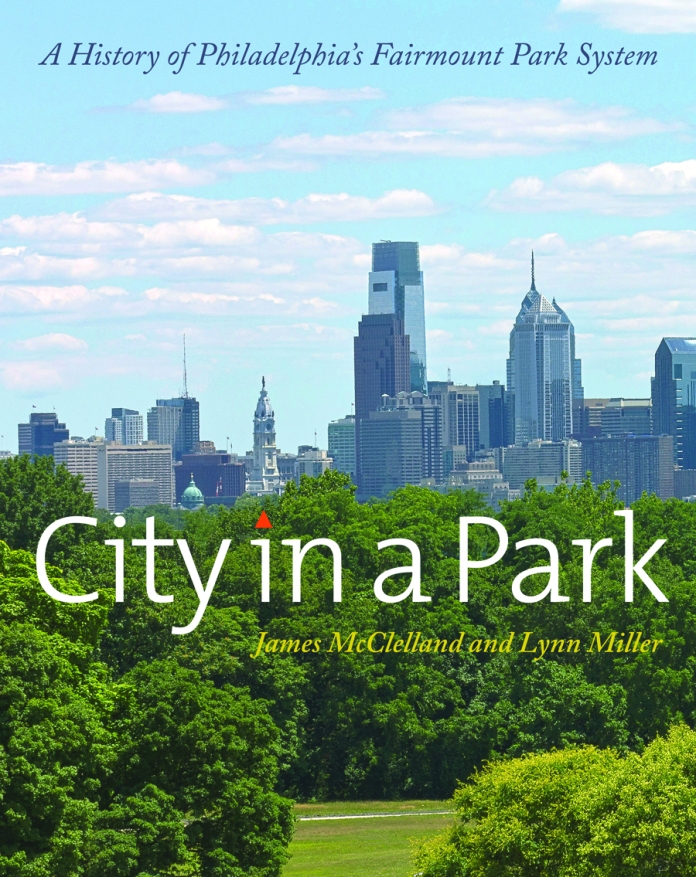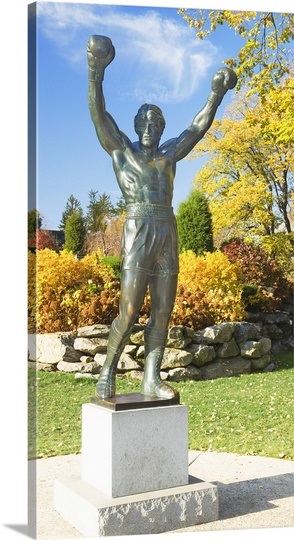
I still find books on local history hard to resist. My most recent read is “City in a Park: a history of Philadelphia’s Fairmount Park System,” by James McClelland and Lynn Miller. Temple University Press, 2016. It’s a good coffee table book, lots of pictures, but unfortunately a rather bland text. The authors lack a distinctive perspective or style. There is no strong personal story. Still it is a good overview of Philadelphia’s Park system.

William Penn wanted to create a “greene countrie town.” Fairmount and other city parks fulfilled that vision. The beginning of the current Fairmount Park dates to the waterworks that was built in the early 1800s, on the “faire mount” that is shown along the banks of the Schuykill River on Thomas Holmes’s 1684 Plan for the City of Philadelphia. The Plan also shows the four squares, one in each quadrant of the city, and one in the center. I discovered this plan- map from a company, Historic Urban Plans. For years it was the only textbook for my Local History class at Holy Ghost Prep.

Center square became the site of a water pumping station. Schuykill water was held in a reservoir on the mount, water was gravity fed to Center Square, and then it was pumped throughout the city. Mid-century, after the Civil War, the City began acquiring land up the Schuykill, eventually on both sides, to protect the watershed from industrial development, pollution. Philadelphia would have safe, good, clean water. In the 1830s, a “rural garden for the dead,” Laurel Hill Cemetery was built in the watershed. Victorians wanting to escape the heat, congestion, and filth of the city would visit the waterworks and Laurel Hill.
Some of the land the city purchased came with country estates. The first was Lemon Hill (initally developed by Revolutionary War financier, Robert Morris — Morrisville in Bucks County.) Some of these estates are now known as the country houses of Fairmount Park — Mount Pleasant, Strawberry Mansion, Woodford, Sweetbriar, Cedar Grove, Belmont, Rockland and Stenton. Some are decorated and opened to the public for a Christmas tour; we did it one year with Rob and Lisa Buscaglia. Beautiful.

A few houses stand out. Solitude, the home of Penn’s grandson, John, is still standing in the Philadelphia Zoo. John Bartram, the first American botanist’s house is very unique. Several years ago we took a boat ride to Bartram’s, there was time to tour the house and gardens. In the gift shop, we were drawn to several whimiscal botanical illustrations by MF Cardamone. We noticed that the artist’s studio was on Righter’s Mill road in Gladwyne — Jen and Rob live on Righter’s. We visited the artist’s studio and purchased a print; a few weeks later, we purchased two for Jenny at a show Cardamone was having at the Academy of Natural Science. Very neat; and local.

Many years ago we visited Rittenhouse Town, a colonial paper mill complex on the Wissahickon creek — it feeds into the Schuykill and is part of Fairmount Park. I believe they had paper making classes. Another place we visited many years ago was the Japanese House and Garden, Shofuso, in western Fairmount. They hosted tea ceremonies; I should see if they still have them. Nearby is Memorial Hall, one of the few buildings left from the 1876 Philadelphia Centennial Festival. It served as the city art museum and more recently is the Please Touch children’s museum. We’ve taken Eli and Viv to the museum. Maybe we should do it again — they’re getting too old. The only other extant Centennial building is the Ohio house, now a small cafe. Delightful place for lunch.

The Schuykill is known for boating, the club houses of Boathouse Row, the Schuykill Navy was the first amateur athletic association, the statue of John Kelly, who was ruled ineligible to compete in Britain’s Henley Regatta because he worked with his hands. He went on to the Olympics. We have never attended a Schuykill regatta. This should be high on our local field trip list. The Smith Memorial Playground is another interesting place in the park that we have never visited. Grandkids may have been there; We should take them again.
On a number of trips, we’ve explored the Wissahickon Valley part of the Park. There is a road along the creek, Forbidden Drive. No cars. Valley Green, a way station on the trail, now a restaurant, lunch stop for walkers. Jenny lived and went to college nearby at Philadelphia University has many memories associated with the Forbidden Drive walk.

“City in the Park” devotes several chapters to sculpture in Fairmount Park, in fact sculpture throughout the city. Philadelphia has an ordinance that requires certain types of new construction to contribute to public sculpture. Much of the older sculpture was memorials to the famous — George Washington, General George Meade, Benjamin Franklin, Marquis de Lafayette, Ulysses S. Grant, James A. Garfield, even Joan of Arc. The list goes on.
Then there are the classical inspirations. Alexander Calder’s “Fountain of the Three Rivers” at Logan Circle; (where I shot some of Jenny and Rob’s pre-wedding pictures); or “The Wrestlers,” in Fairmount; and “Prometheus Strangling the Vulture” at the Art Museum.
Rodin’ “The Thinker” is in front of the Rodin Museum; “Rocky,” yes, Stallone from the movie, is currently in front of the Art Museum. It is one of the most visited tourist spots in the City. My grandson, Eli recently, celebrated something by running up the museum steps and posing with Rocky.

There are many modern, sometimes abstract, and sometimes controversial sculptures. The most famous in Robert Indiana’s “Love.” It’s a classic Philadelphia photo op — looking down (or is it up) the Benjamin Franklin Parkway. Across from City Hall is Claes Oldenburg’s “The Clothespin,” and at the entrance to the Benjamin Franklin bridge is Noguchi’s “Bolt of Lightning” — Franklin, kites, lighting; very Philadelphia.
The “City in a Park” has a chapter on the original squares that date to the Holmes 1680s plan. Today they are called Franklin, Washington. Rittenhouse and Logan. Originally Philadelphia Quakers would not honor individuals, so the squares were know by compass points — northeast, southwest etc. Another chapter is about the creation of the turn of the century, “City Beautiful” movement that created the Benjamin Franklin Parkway (modeled on the Champ Elysees).

When I read a book like “City in the Park” I am ready for local field trips. I want to explore and photograph the Park from my perspective. It will take more than onE trip. Maybe a summer project! Well, summer and fall. Maybe.

